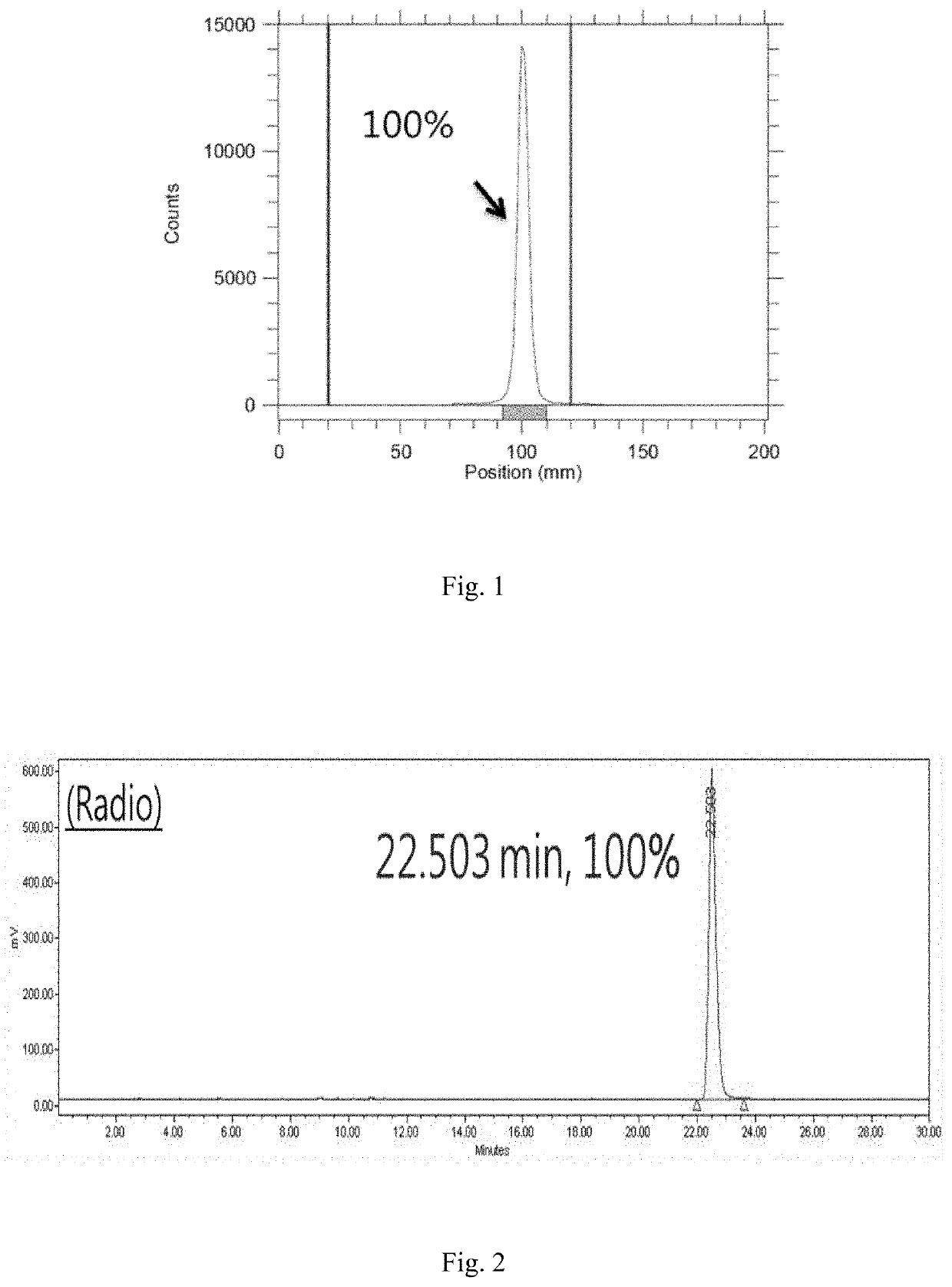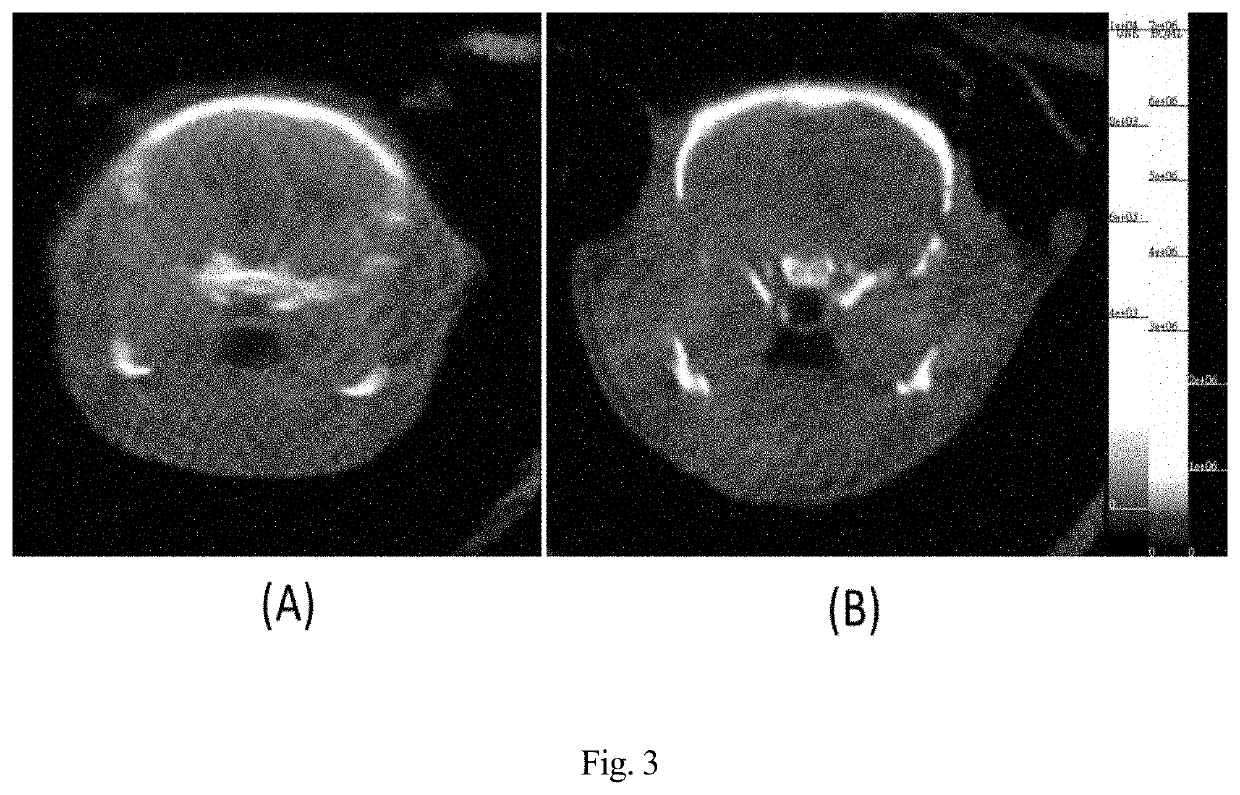Microtubule-associated protein Tau imaging compounds for Alzheimer's disease and precursors thereof
a technology of microtubules and imaging compounds, applied in the field of imaging compounds and precursors of microtubule-associated protein tau, can solve the problems of drug based on the tau hypothesis, delay the progression of the disease, and improve the patient's symptoms, so as to reduce the synthesis cost, reduce the difficulty of affecting activity, and improve the effect of patient's symptoms
- Summary
- Abstract
- Description
- Claims
- Application Information
AI Technical Summary
Benefits of technology
Problems solved by technology
Method used
Image
Examples
embodiment 1
Synthesis of INER-TAU-I1 Series Compounds
[0024]Synthesis of precursor 6-iodo-3-(2H-isoindol-2-yl) isoquinoline, comprising:
[0025]1. Adding the compound 1, 6-fluoro-3-(2H-isoindol-2-yl) isoquinoline 9.5 mmole, to a saturated solution of ammonia dissolved in methanol, stirring and being reacted for 5 days at 120° C. to obtain compound 2, 3-(2H-isoindol-2-yl) isoquinoline-6-amine: MS (mass spectrometry) (m / z) 260.1 [M+H]+.
[0026]2. Suspending compound 2 in water, adding concentrated sulfuric acid at room temperature and heating to 70-80° C. to obtain a clear solution, and the mixed solution was cooled to 0° C. and sodium nitrate was added and reacted at 0° C. for 15 minutes, then potassium iodide, in which molar ratio of compound 2:sodium nitrate:potassium iodide=1:1.98:1.98, was added and reacted for 5 minutes to obtain compound 3, 6 iodo-3-(2H-isoindol-2-yl) isoquinoline: MS (m / z) 371.0 [M+H]+, as shown:
[0027]Synthetic of tracer [123I]6-iodo-3-(2H-isoindol-2-yl) isoquinoline:
[0028]Add...
embodiment 2
Synthesis of INER-TAU-I2 Series Compounds
[0035]Synthesis of precursor 5-iodo-3-(2H-isoindol-2-yl)isoquinoline, comprising:
[0036]1. 3-chloroisoquinolin-5-amine compound 8 is dissolved in dichloromethane, and triethylamine and di-tert-butyl dicarbonate were added, in which molar ratio of compound 8:triethylamine:di-tert-butyl dicarbonate=1:2:1.2, the mixture was reacted at room temperature for 3 hours, and then concentrated and purified under reduced pressure to obtain compound 9, tert-butyl (3-chloroisoquinolin-5-yl) carbamate: MS (m / z) 279.1 [M+H]+.
[0037]2.3H-Indole and compound 9 were dissolved in tetrahydrofuran and added sodium 2-methylpropan-2-olate and t-BuXPhos palladium(II) biphenyl-2-amine mesylate were added, in which molar ratio of 3H-Indole:compound 9:sodium 2 -methylpropan-2-olate: t-BuXPhos palladium(II) biphenyl-2-amine mesylate=1.5:1:2:0.1, the mixed solution was filled with nitrogen and reacted at 50° C. for 16 hours, purified to obtain compound 10, tert-butyl 3-(2H-...
embodiment 3
Synthesis of INER-TAU-R1 Series Compounds
[0048]Synthesis of precursor 7-(2-p-toluenesulfonyloxymethoxy)-3-(2H-isoindol-2-yl) isoquinoline, comprising:
[0049]1. 1,3-dichloro-7-methoxyisoquinoline compound 17 is dissolved in a mixed solution of acetic acid and 45% iodine hydride, and red phosphorous is added at room temperature, and the mixed solution is reacted at 100° C. for 4 hours, then cooled to room temperature and purified to obtain compound 18, 3-chloro-7-methoxyisoquinoline: MS (m / z) 194.0 [M+H]+.
[0050]2. 3H-Indole and compound 18 were dissolved in tetrahydrofuran and added sodium 2-methylpropan-2-olate and t-BuXPhos palladium(II) biphenyl-2-amine mesylate at room temperature, in which molar ratio of 3H-Indole:compound 18:sodium-methylpropan-2-olate:t-BuXPhos palladium(II) biphenyl-2-amine mesylate=0.41:1:1.33:0.03, and the mixed solution was filled with nitrogen and reacted at 50° C. for 16 hours and purified to obtain compound 19, 7-methoxy-3-(2H-isoindol-2-yl) isoquinoline:...
PUM
| Property | Measurement | Unit |
|---|---|---|
| lipid-water partition coefficient | aaaaa | aaaaa |
| lipid-water partition coefficient | aaaaa | aaaaa |
| temperature | aaaaa | aaaaa |
Abstract
Description
Claims
Application Information
 Login to View More
Login to View More - R&D
- Intellectual Property
- Life Sciences
- Materials
- Tech Scout
- Unparalleled Data Quality
- Higher Quality Content
- 60% Fewer Hallucinations
Browse by: Latest US Patents, China's latest patents, Technical Efficacy Thesaurus, Application Domain, Technology Topic, Popular Technical Reports.
© 2025 PatSnap. All rights reserved.Legal|Privacy policy|Modern Slavery Act Transparency Statement|Sitemap|About US| Contact US: help@patsnap.com



